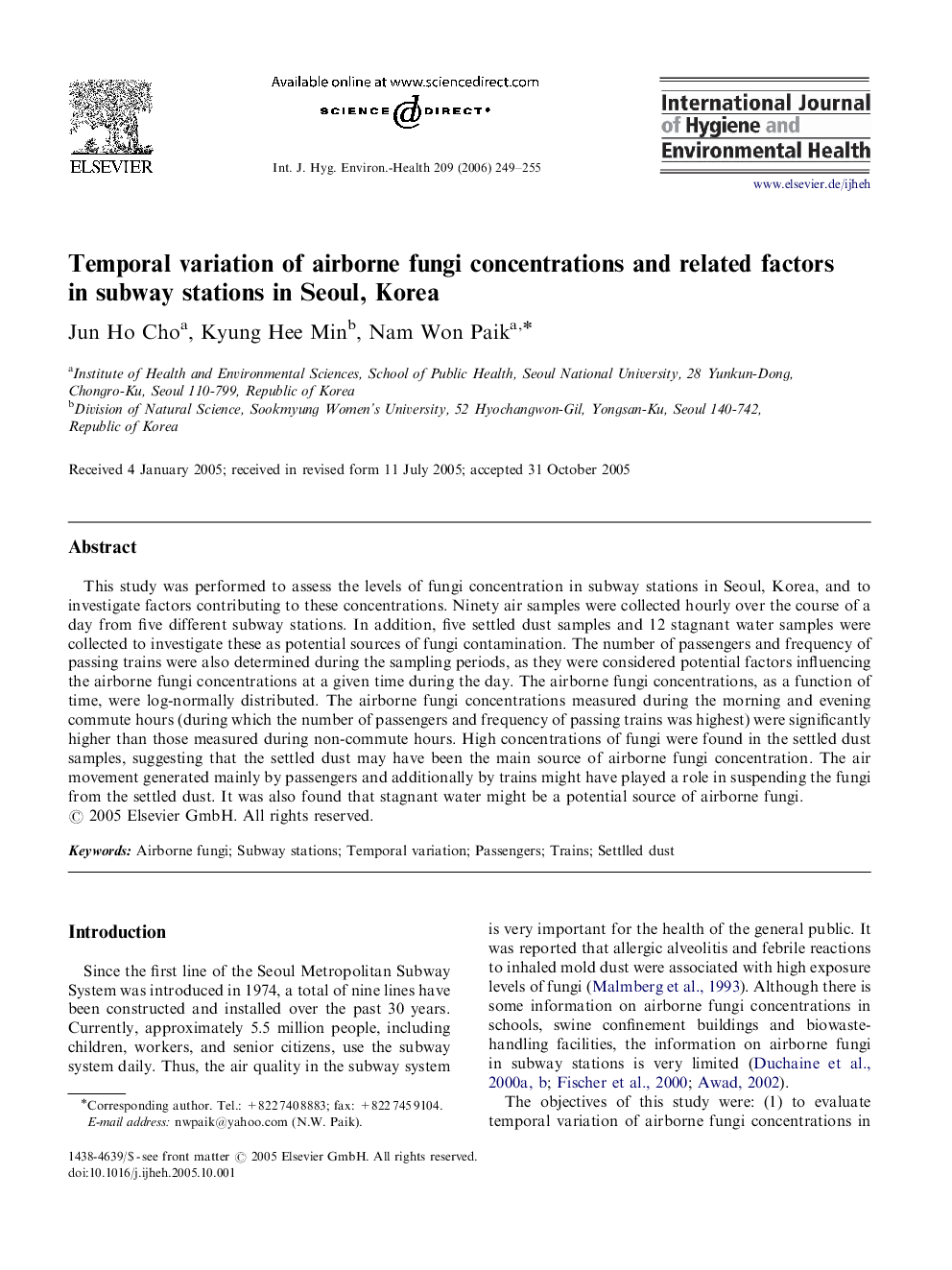| Article ID | Journal | Published Year | Pages | File Type |
|---|---|---|---|---|
| 2589282 | International Journal of Hygiene and Environmental Health | 2006 | 7 Pages |
Abstract
This study was performed to assess the levels of fungi concentration in subway stations in Seoul, Korea, and to investigate factors contributing to these concentrations. Ninety air samples were collected hourly over the course of a day from five different subway stations. In addition, five settled dust samples and 12 stagnant water samples were collected to investigate these as potential sources of fungi contamination. The number of passengers and frequency of passing trains were also determined during the sampling periods, as they were considered potential factors influencing the airborne fungi concentrations at a given time during the day. The airborne fungi concentrations, as a function of time, were log-normally distributed. The airborne fungi concentrations measured during the morning and evening commute hours (during which the number of passengers and frequency of passing trains was highest) were significantly higher than those measured during non-commute hours. High concentrations of fungi were found in the settled dust samples, suggesting that the settled dust may have been the main source of airborne fungi concentration. The air movement generated mainly by passengers and additionally by trains might have played a role in suspending the fungi from the settled dust. It was also found that stagnant water might be a potential source of airborne fungi.
Related Topics
Life Sciences
Environmental Science
Health, Toxicology and Mutagenesis
Authors
Jun Ho Cho, Kyung Hee Min, Nam Won Paik,
